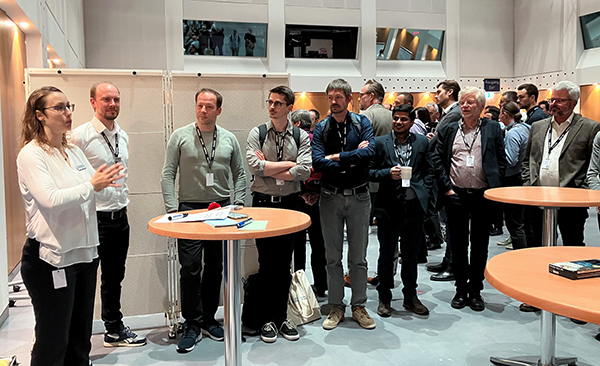
|
Systems engineering benefits from global change managementBy Johannes Lützenberger What must a software solution be able to do in order to ensure that system engineers are provided with all the information they require? This was the question addressed at the World Café session organized by PROSTEP at Tag des Systems Engineerings 2024 (Day of Systems Engineering) in Leipzig. One important insight gained was that solutions must map and support processes such as change management across all domains. 
Day of Systems Engineering is actually a misnomer as the event in Leipzig was held over a period of three days. With more than 350 participants, it was particularly well attended. BHC and PROSTEP were represented in Leipzig with a booth that showcased the consulting services we offer and our digital thread solution, OpenCLM. We also organized a World Café session with the aim of familiarizing ourselves with the needs of the system engineers when it comes to making information available. 
Five key conclusions can be drawn from the joint brainstorming session:

One of the processes that was repeatedly mentioned at the World Café was global change management. "Global" in this context means that the process must be supported across domain and company boundaries. This change process is particularly relevant for the product use phase and often has to be defined individually for each industry, such as the change process specified by the VDA or in line with A-SPICE. Changes can have a variety of different causes and catalysts. Depending on the industry involved, changes in legislation or new scientific findings may necessitate a change process. A classic case is, of course, feedback from customers indicating that something is not working as it should. If this issue is relevant to the product as such, it provides the starting point for a change. The issue then becomes a requirement for which alternative solutions are first developed. This is primarily a task for system engineers, who use their domain-specific tools for this purpose. Once a decision in favor of a certain alternative is made, this alternative is specified as a change request. Other specialist departments that are responsible for implementing the changes in the change order(s) (e.g. mechanics, E/E, software, etc.) are also involved in this phase of the change process. Dependencies that are more or less explicit exist between the domain-specific changes but in the vast majority of cases, they are not mapped digitally. To enable collaboration, individual change processes take place in the domain tools and synchronization is carried out manually in tables, meetings or even by means of agreements via email or chat. 
The complexity of today's mechatronic products requires an option that also allows the change process to be mapped digitally as a cross-domain process, while at the same time linking it to the corresponding artifacts in the domain systems. In other words, creating a digital thread for the change. This digital thread maps the dependencies in terms of both context and process. To do this, the engineers need a change cockpit that allows them to visualize the information in the respective context and see the progress of their work. 
OpenCLM provides just such a cockpit. OpenCLM is a lightweight web application that links information objects from different domain-specific IT systems. This makes it possible to create a digital change thread that maps the process view and the data view. The individual domain-specific change processes are brought together in a central location and orchestrated. The solution also aggregates the maturity level of the changes and documents the status of the domains and their changes. More information about OpenCLM as a solution for global change management can be found here.
|
|
| © PROSTEP AG | ALL RIGHTS RESERVED | IMPRINT | PRIVACY STATEMENT | YOU CAN UNSUBSCRIBE TO THE NEWSLETTER HERE. |

